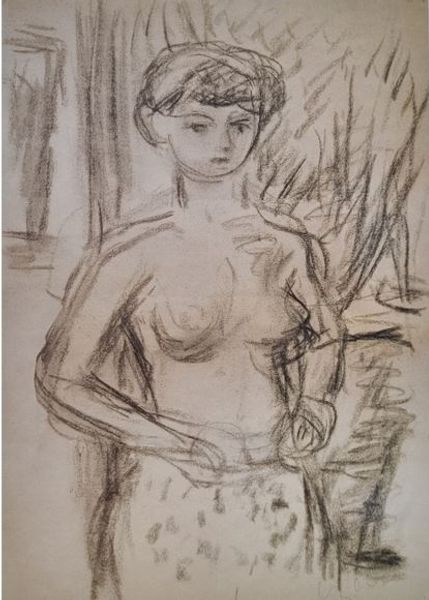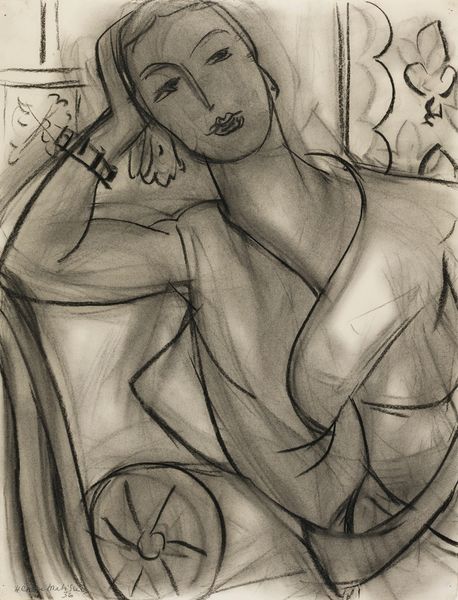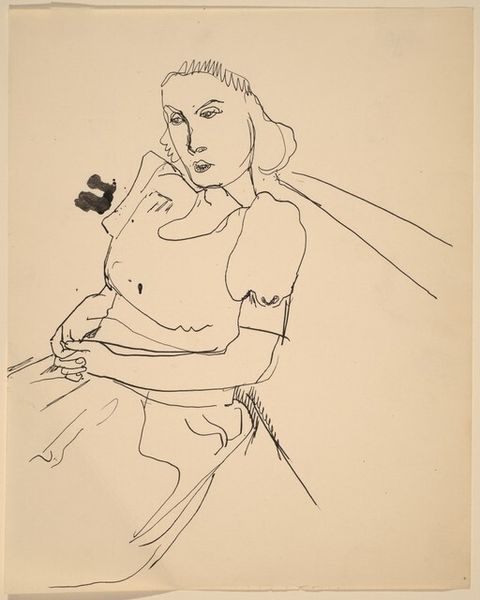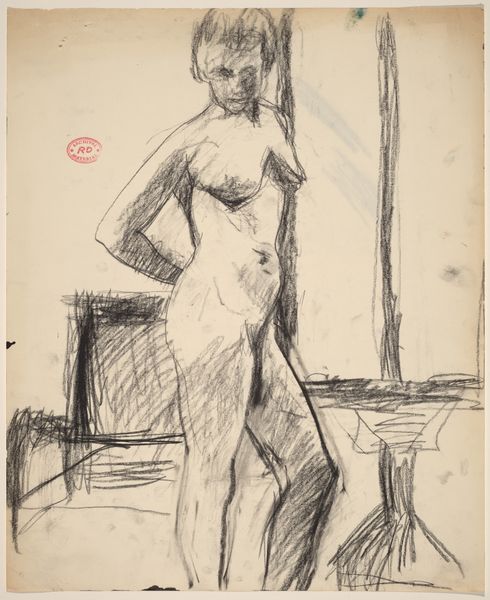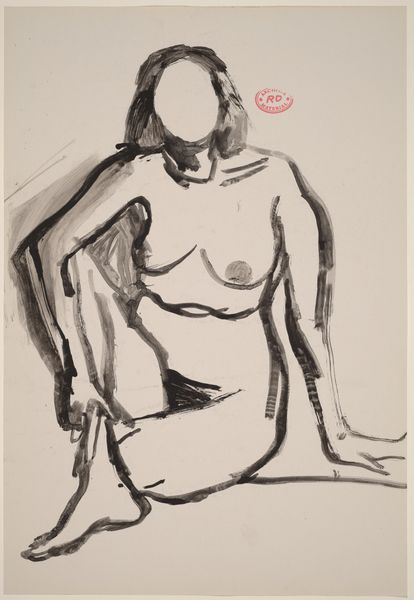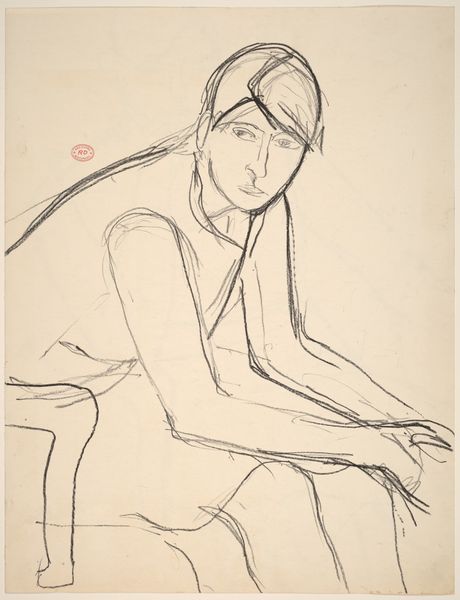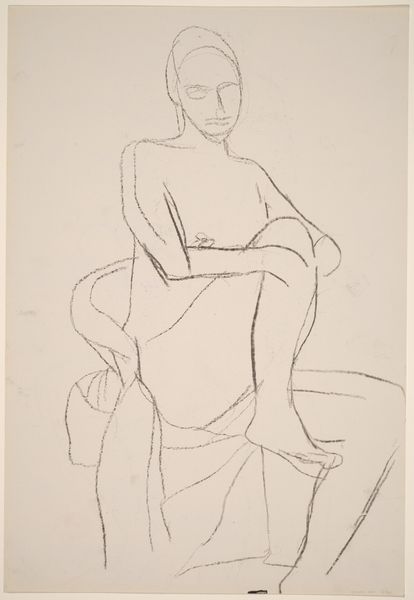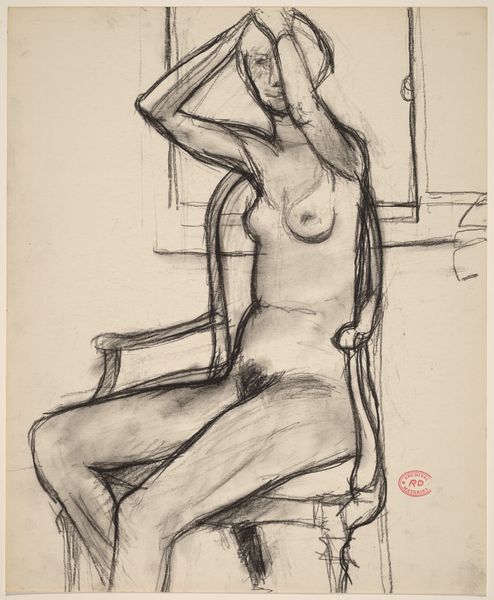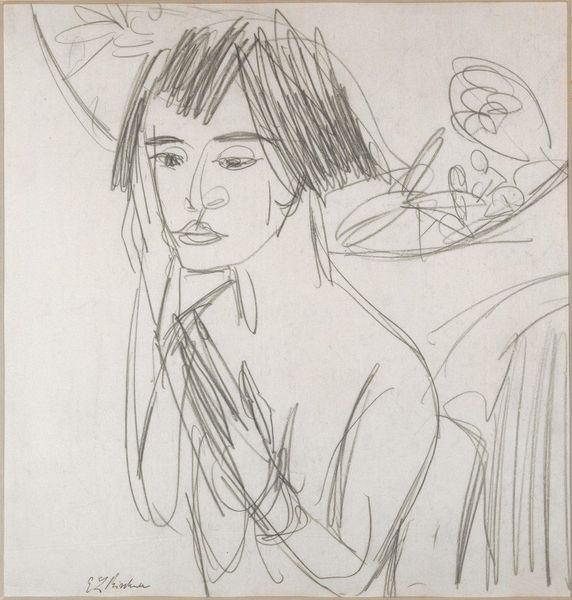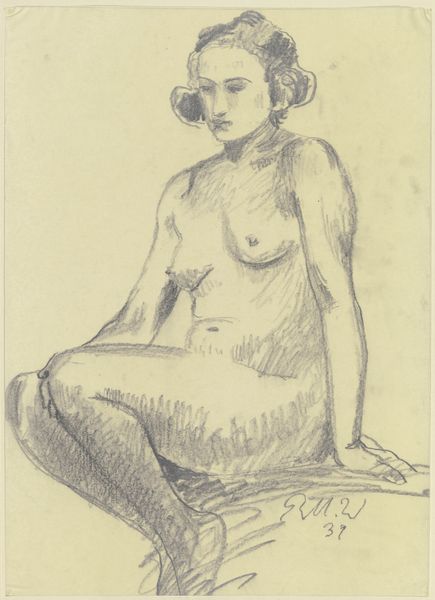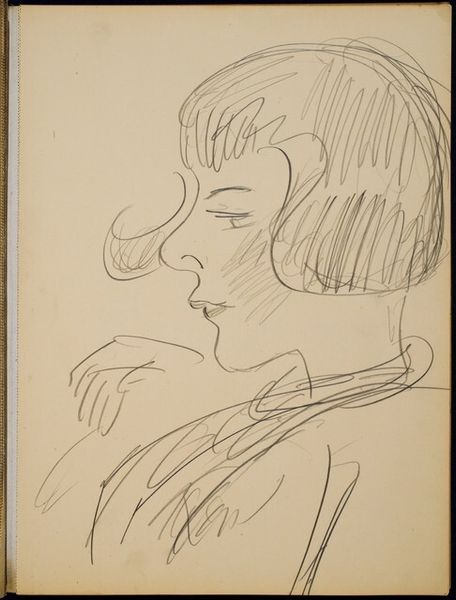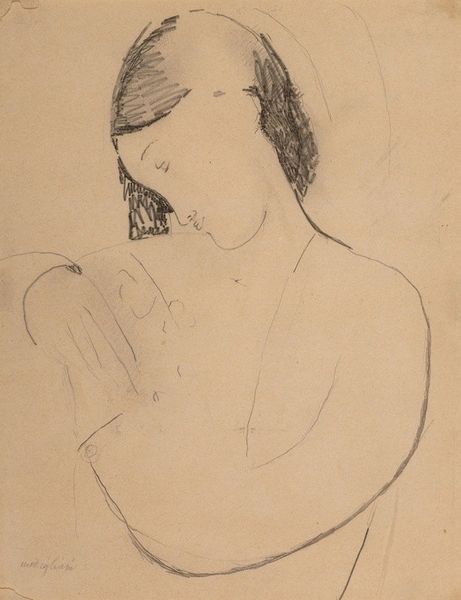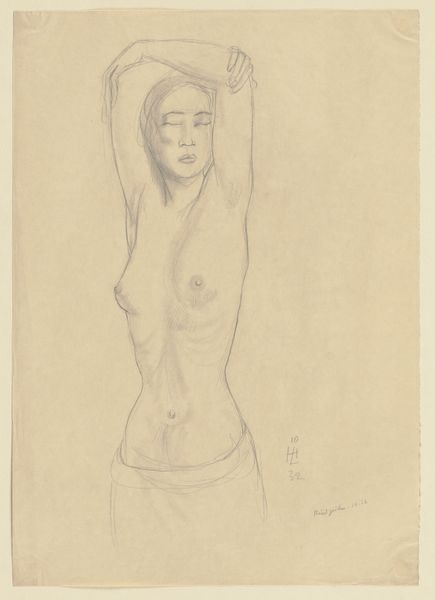
drawing, pencil
#
portrait
#
drawing
#
figuration
#
pencil drawing
#
pencil
#
portrait drawing
Copyright: Modern Artists: Artvee
Curator: Here we have Henri Matisse's "Femme Assise," created in 1943 using pencil on paper. Editor: The first thing that strikes me is the sheer economy of line. It's both assured and remarkably sensitive. The figure seems to emerge softly from the ground of the paper. Curator: Precisely. While seemingly effortless, the sketch resonates with Matisse’s lifelong exploration of capturing essence. During wartime, his access to materials was limited, which encouraged this distilled simplicity. Note the symbolic importance even here: the seated woman, a traditional symbol of contemplation. Editor: Limited materials actually serve the artwork beautifully. You can see the individual strokes of the pencil building the form. And notice the paper itself - the subtle textures suggesting something handmade, personal. It all draws attention to the physical act of making. Curator: I’d suggest this work serves as more than just a record of wartime material conditions, although that is an astute observation. Consider how the pendant necklace almost becomes a dangling ideogram - a symbol of beauty, even defiance, amidst the darkness. This speaks to how Matisse understood our shared symbols. Editor: But does that pendant's seeming artlessness undercut a read of wartime defiance? I think its value lies more in the rough qualities and in how these techniques reflect available resources. Curator: Well, I believe both points stand: a study of making that transcends limitations, charged by a symbolic dimension, accessible and immediate to its moment and timeless, which in a sense, defies time. Editor: I’d agree. Considering the processes used truly gives us an appreciation of form as an outcome of real labor under duress. Curator: Indeed. By understanding the process we open up avenues to the meaning, while tracing symbols gives form a sense of transcendence, especially poignant within historical and societal contexts.
Comments
No comments
Be the first to comment and join the conversation on the ultimate creative platform.

